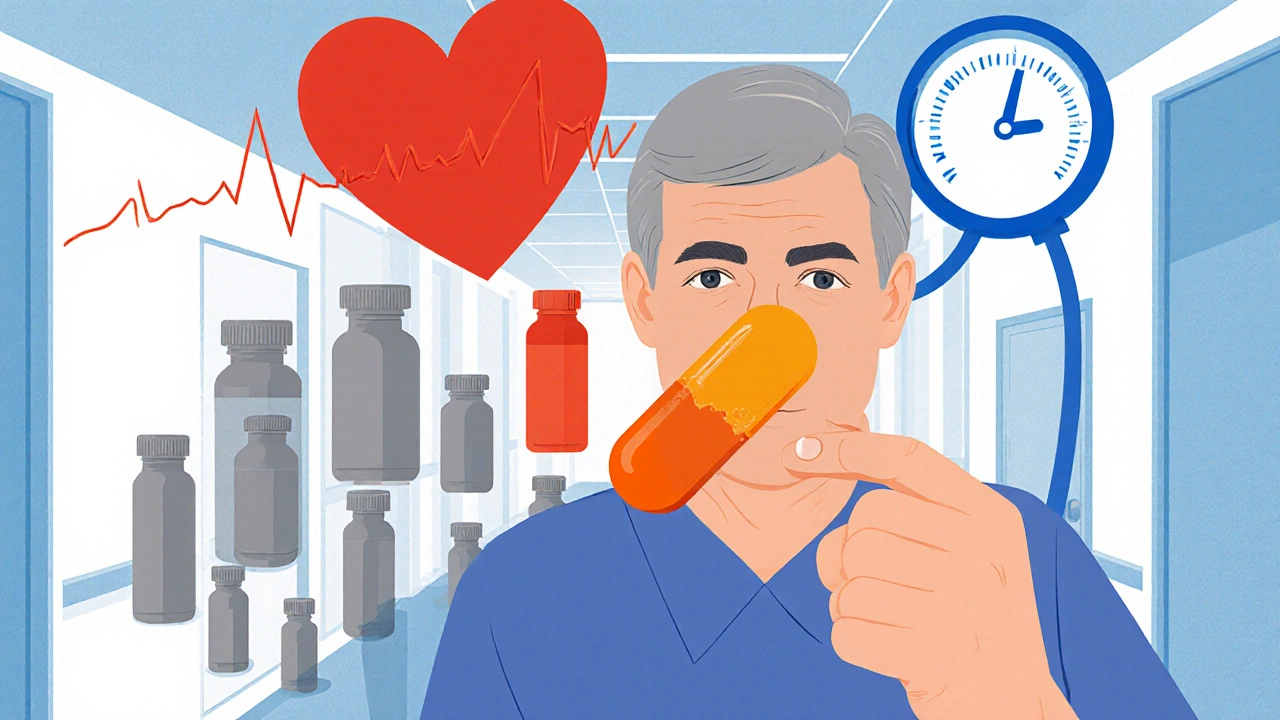Clonidine: Uses, Effects, and Practical Insights
When talking about Clonidine, an oral and transdermal medication that stimulates central alpha‑2 adrenergic receptors to lower blood pressure and calm the nervous system. Also known as Catapres, it’s a go‑to option for several conditions, from high blood pressure to ADHD and opioid withdrawal. Below we’ll break down how it fits into everyday health scenarios and what to watch for.
How Clonidine Works and When It’s Used
The core action of Clonidine is linked to alpha‑2 adrenergic agonism, a mechanism that reduces sympathetic nerve signals, leading to calmer heart rate and lower vascular resistance. This effect makes it useful for hypertension, the chronic elevation of arterial pressure that can damage organs over time. By dialing down the “fight‑or‑flight” response, Clonidine helps keep blood pressure in a healthier range without the heavy sedation some older drugs cause.
Beyond blood pressure, the medication is also prescribed for ADHD, attention‑deficit hyperactivity disorder, a condition marked by impulsivity, inattention, and hyperactivity. In kids and adults who don’t respond well to stimulants, Clonidine’s calming action can improve focus and reduce disruptive behavior. The same calming pathway is why clinicians turn to Clonidine during opioid withdrawal, the set of symptoms that appear when a person reduces or stops opioid use. It eases symptoms like anxiety, sweating, and muscle aches, helping patients stay on track with recovery programs.
Patients often wonder how Clonidine differs from other blood‑pressure drugs. Unlike ACE inhibitors or diuretics, which act on the kidneys or blood vessels directly, Clonidine works centrally, meaning it targets the brain’s control centers. This makes it a good backup when other meds cause unwanted side effects or don’t achieve target pressures. However, because it can cause dry mouth, drowsiness, or low blood pressure when standing up, doctors usually start with a low dose and adjust slowly.
When you’re prescribed Clonidine, timing matters. Taking it at night can leverage its sedative effect, helping with sleep issues that often accompany hypertension or ADHD. If you’re using the patch form, you’ll need to rotate application sites to avoid skin irritation—another practical tip that many patients overlook. Always keep a backup plan for missed doses; a sudden drop in drug levels can cause a rebound rise in blood pressure, which feels like a rapid “spike” and may be risky.
Safety checks are simple but essential. Before starting, inform your doctor about any heart rhythm problems, thyroid issues, or other medications like beta‑blockers that also lower heart rate. Combining Clonidine with alcohol or other sedatives can amplify drowsiness, so moderation is key. For pregnant or breastfeeding individuals, the benefits must be weighed against potential risks, as the drug crosses the placenta.
In the end, Clonidine serves as a versatile tool in managing several health challenges. Whether you’re tracking blood pressure numbers, coping with ADHD symptoms, or navigating opioid withdrawal, understanding how the drug works and what to watch for can make a big difference. Below you’ll find articles that dive deeper into each of these areas, offering real‑world advice, dosage guidelines, and patient stories to help you make informed choices.

